The Long Haul: Reflections on Decluttering
Link to the JSE March 2024 General Issue Table of Contents
Fockler JSE March 2024 General Issue PDF
Abstract: This photo essay illustrates my journey of decluttering my childhood home. I have spent eight-months decluttering so far. Interestingly, I initially planned to declutter quietly and not document my experience. But the more I decluttered, the more I felt there was a story to tell, a cautionary tale of sorts. In this essay, I document my reflections on decluttering and raise questions about Western consumer culture. Logos and brand names have intentionally been edited/removed from photos.
Keywords: decluttering, unsustainable consumption and waste, consumer culture, consumption studies
It was early January. I was sitting in my parents’ basement when I noticed a box tucked away on a bookshelf. I was curious. So, I opened the box. It was full of stuff: pens, postcards, a telephone directory. There was also a deck of cards, a bag of buttons, and a few family photos in the box. I stopped to look at one photo. It was a picture of me with my grandmother circa 1996. Opening this box started me on a journey. It led me to decluttering my childhood home.
My parents live in a detached bungalow, located in a suburb of Ontario, Canada. They have lived in this house since the late 1970s. I grew up in this house. This house has three bedrooms, two bathrooms and a 1.5 car garage. Floor plans indicate that there is a total floor space of 2200 square feet, with a lot size of 50’ x 110’. While I consider this fairly spacious, all this space was the perfect storm. It provided room to store stuff.
Stuff did not just happen. Rather it was accumulated over many years. Growing up, I remember my parents spending weekends driving to big-box stores to buy groceries and other things like tools and building supplies for home repairs. Cans of paint, carpets, flashlights, screwdriver and wrench sets: it was all stuff that my dad could not resist buying, especially when on sale or discounted (see Khan et al., 2019). Other stuff like clothes, books, furniture, board games, stereo equipment, antiques, and dishes were given to my parents from relatives and friends or found at thrift stores. Many times, before school, I remember my father stopping the car to pick-up ‘free’ stuff left on the curb. Now, decades later, I was sitting in a graveyard of stuff. Some of this stuff was left in its original packaging, price tags intact. Feeling sick to my stomach, I knew that this was a mess I would eventually inherit. I had the sudden urge to declutter (see also Hall, 2020).
Decluttering is a growing trend. This is evidenced by ‘decluttering’ having more than 44 million hits on Google. There are books on decluttering (e.g., Silverthorn, 2017), articles (e.g., Marx, 2022), blog posts (e.g., Gordon, 2023), TV shows (e.g., Berman & Kondo, 2019), podcast episodes (e.g., Mills, 2023). There are even decluttering experts (e.g., This Girl Can Organise, n.d.). The Cambridge Dictionary defines decluttering as an action, where the objective is “to remove things you do not need from a place, in order to make it more pleasant and more useful”. Lee (2017) states, “While the process of tidying things up is considered mundane, the domestic order is often linked to consumer tranquility” (p. 454). Muster et al. (2022) characterize “decluttering… between housework and self-care” (p. 1).
For me, decluttering my parents’ home was work, a laborious process. But it was also an emotional experience. I was delighted to find dolls and teddy bears that I played with as a child. I always liked my science kit and xylophone. Finding the VCR player, I snacked on popcorn and watched my favorite ‘90s movie on VHS. The picture was fuzzy but the movie still made me cry. One rainy afternoon, with board games stacked around me, I sat in the hallway and played a game of Tiddlywinks. At one point, I sipped on tea and reminisced with my mother over old arts and crafts supplies. Nostalgia was seeping in. I was getting sentimental.
Batcho explains nostalgia as an emotion or feeling, where one remembers their past and longs to return to it, aching to re-experience what once was (Luna, 2019). For Batcho, nostalgia can abstractly represent “missing the innocence of childhood” for example, but also “a more concrete set of things that we miss” like “toys… that you had in your former days” (Luna, 2019). In my case, I did not miss toys from my childhood. They were stockpiled in my parents’ basement waiting to be passed down to my children someday (but I never had children for personal and environmental reasons, a rising tendency for many, see Fleming, 2018). What I did miss was what these toys represented: my youth. As I sorted through boxes of toys, puzzles, and games, I remembered old holidays, summer vacations, and first days of school. Everything had become so complicated over the last few years. I remembered a time when things were simpler, when a book was my entire afternoon and a walkie-talkie was how I communicated with friends.
Decluttering was like opening a time capsule. It was a window into the past. Sorting through plastic containers and piles of things did not make me happy. Rather most days it made me miserable and irritable. This is not surprising, since research by Swanson and Ferrari (2022) suggests that “clutter negatively impacts… well-being” (p. 7). I sweated during heatwaves, digging out old furniture and outdated electronics buried in backyard sheds. I cried, feeling overwhelmed and embarrassed by the excess of stuff. If my parents’ home had been left intact, with not a single item removed for 200 years, it would have been a treasure trove of artifacts for a future archaeologist. But for me, in the present moment, the stuff was a mess that I wanted to clean up. My photo essay attempts to replicate my desire to clean up the mess, to organize, arrange, and find beauty in the chaos.
It is easy to buy stuff, but harder to let go of stuff in an ethically responsible way. What are “the moral, practical, and sustainable implications” of disposing stuff (Wells, 2022, para. 1)? Cleaning up my parents’ home was a time-sink. It would have been easier to rent a large garbage bin and toss everything into it. It would have saved me hours, days, months. Instead I chose a sustainable approach (see Muster et al., 2022). This meant washing, sewing, glueing, and mending anything salvageable and then dropping it off to a non-profit thrift store two miles down the road. Sometimes I walked to get to the thrift store. Most times I carpooled.
There was a designated donation center at the back of the thrift store. Large blue trolley bins were lined up, welcoming donations. When these bins were full, staff would wheel them inside to be emptied. On a few occasions, I took a look inside the center to get a closer look at the donating process. I watched as thrift store staff rushed to organize and sort through donations. There was barely any floor space to walk. Rugs, clothes, computer printers, shoes, suitcases, books, toys, sports equipment, furniture, artwork, and small appliances like toasters were piled high to the ceiling. It looked like a game of Jenga where, at any minute, things were going to topple.
After donating, I would often hear a thrift store employee shout “wait a minute” and then smiling, hand me a coupon. In large bold font, the coupon read: “Thank You For Giving Generously” and “20% OFF your next purchase of $20 or more”. Each time I donated, I received a coupon. By the end, I had accumulated 10 or more. These coupons invited me to thrift shop, to experience the thrill of finding that one-of-a-kind item (see Sicurella, 2021). These coupons were also a “scheme” (Kadoya et al., 2020, p. 1), “designed to improve consumer spending” (p. 3). Thrifting or buying vintage has become big business, a “$28 billion industry” (Sicurella, 2021, para. 5).
Although I was a thrifter, somewhere between cleaning up and donating, owning more stuff lost its appeal. The more time I spent sorting through stuff, the more I questioned its value, purpose, and relevancy. Thinking about my own mortality, everything I own, at some point, will be passed on or donated and burden the Earth. Is materialism the “legacy” we want to leave behind (see Mills, 2023)? Taking multiple trips to the thrift store, being privy to behind the scenes, seeing the piles of unwanted things, made me confront the realities of mass consumption and waste (see also Sabanoglu, 2024).
Donating is a stopgap measure, helping “to keep the items out of landfills for longer” (Wells, 2022, “Choose where to donate,” para. 5). But was there a way to stop the waste or at the very least slow it down? How might we as a society reduce our consumption and waste and adopt more sustainable lifestyles? Below, I describe five popular sustainability strategies: minimalism, sharing, self-audits, thriftiness, and eco-challenges.
Minimalism is a growing movement in the West. Martin-Woodhead (2022) portrays minimalism as “voluntarily reducing consumption and lessening, limiting and maintaining the number of possessions owned to a bare minimum” (p. 1012). In his TED Talk, Less Stuff, More Happiness, Graham Hill speaks about minimalism being key to a happier life. Hill states that owning less stuff, owning stuff that is more efficient (multi-functional), and living in smaller spaces reduces financial stressors, environmental footprints and provides more personal freedom (TED, 2011). In support of minimalism, Shearer and Burton (2021) state that people in Western countries are choosing to voluntarily downsize and live in smaller spaces like vans and tiny homes. “The [tiny house] movement” Wilson and Wadham (2023) state, “is frequently linked to Thoreau’s ideas of simple living and its relationship to questions of freedom, sustainability and economic security” (p. 332).
Another option is sharing. An increasing number of organizations and community programs are part of the Sharing Economy, which is based on communities and individuals using, renting, and sharing resources (e.g., Cooper & Timmer, 2015; Sanders, 2019; TED, 2023). Nonprofit organizations like Little Free Library (2022) promote book-exchange. The Buy Nothing Project (2024) has a broader goal of sharing anything and everything for free. Also, at various libraries across Canada and the United States, books and other things can be borrowed like camera equipment, board games, telescopes, fishing kits, musical instruments, and tools (e.g., Barrie Public Library, 2023; Brampton Library, 2023; Grande Prairie Public Library, 2023; Prescott Public Library, n.d.).
What about auditing our consumption and waste? At University of California, Savageau (2013) teaches a sustainable design course and begins this course with students performing a three-day audit of the water, gasoline, and electricity they use, and what they throw in the trash. Having implemented this audit in her course for years, Savageau finds a reoccurring pattern: students are generally shocked by their audit results and convey an interest in changing their behaviors. “The results of this audit” Savageau argues, “suggest that it can lay the groundwork for real behavioral change when paired with self-reflection and other activities” (p. 22). Savageau mentions that she couples this audit activity with an excursion to a local landfill and recycling facility. This helps to strengthen “the urgency of changing consumption and waste behavior and leads to class discussions on the role and responsibility of designers as well as consumers in today’s consumer culture” (p. 22).
You can also be thrifty. Dent defines thrifting as finding new uses for things, giving stuff “a second life, or third life or fourth life” (TED, 2018). This means reusing stuff, upcycling things, reimagining, repurposing and wasting nothing. For some upcycling inspiration, see Upcycle That (2017) and Kruger (2023).
Lastly, eco-challenges are another way to encourage sustainable change. At University of the Sunshine Coast in Australia, Maher and Burkhart (2017) describe students in a food and nutrition course taking part in an “eco-friendly food challenge”, where they blogged about and reflected on their experience of buying local and seasonal foods, reducing their food waste, and lowering their consumption of meat (p. 1108). Maher and Burkhart state that this food challenge aimed to advance student knowledge of “sustainable food systems and dietary practices” (p. 1108). Other popular eco-challenges include the zero waste challenge (e.g., Worcestershire County Council, n.d.) and the commuter challenge (e.g., Global Cycling Network, 2022). To engage more deeply with the issue of consumption and waste, see Hansen and Nielsen (2023).
The above sustainability strategies present a way for individuals to support sustainability in their daily lives. I consider this positive. But many contend that change for sustainability is beyond the individual, that it is the responsibility of corporations and other large organizations. I recognize this argument but believe that we are in this together. Sustainability is not your responsibility or their responsibility but rather our collective responsibility as a global community (see also Monbiot, 2021).
What good is stuff on a burning planet? I wrote this article when wildfires were burning across Canada and evacuation orders issued due to the ongoing blaze (see Cabral, 2023). Terrifying moments like this, the new reality of a climate changing world, helps to put things in perspective and what really counts: air, water, soil, and a livable planet for present and future generations. We can live without the material stuff like fast fashion, throw pillows, and fancy dinnerware sets. But we cannot live without a planet.
References
Barrie Public Library. (2023). Home: Borrow: Library of things. https://www.barrielibrary.ca/borrow/library-of-things
Berman, G., & Kondo, M. (Producers). (2019). Tidying up with Marie Kondo [TV series]. Netflix. https://www.netflix.com/ca/title/80209379
Brampton Library. (2023). Books / More: Library of things. https://www.bramptonlibrary.ca/index.php/books-more/library-of-things
The Buy Nothing Project. (2024). Join Buy Nothing Today! http://buynothingproject.org
Cabral, S. (2023, Aug 18). Canada wildfires: Residents scramble to flee fires in Kelowna and Yellowknife. BBC News. https://www.bbc.com/news/world-us-canada-66550759
Cooper, R., & Timmer, V. (2015, Oct). Local governments and the sharing economy. One Earth. http://www.localgovsharingecon.com/uploads/2/1/3/3/21333498/localgovsharingecon_report_summary_oct2015.pdf
Fleming, A. (2018, Jun 20). Would you give up having children to save the planet? Meet the couples who have. The Guardian. https://www.theguardian.com/world/2018/jun/20/give-up-having-children-couples-save-planet-climate-crisis
This Girl Can Organise. (n.d.). Organising & decluttering services. https://thisgirlcanorganise.com
Global Cycling Network. (2022, Oct 29). We cycled to work every day for a month & this is what happened! [Video]. YouTube. https://www.youtube.com/watch?v=fnwr6YziBrE
Gordon, S. (2023, Apr 3). The connection between decluttering, cleaning, and mental health. Verywell Mind. https://www.verywellmind.com/how-mental-health-and-cleaning-are-connected-5097496
Grande Prairie Public Library. (2023). Using the library: Collections: Tool library. https://gppl.ca/Using-the-Library2/Collections/Library-of-Things/Tool-Library
Hall, J. (2020). Inheriting clutter: How to calm the chaos your parents leave behind. Nashville, Tennessee: W Publishing Group.
Hansen, A., & Nielsen, K. (Eds.). (2023). Consumption, sustainability and everyday life. Palgrave Macmillan. https://library.oapen.org/handle/20.500.12657/60783
Kadoya, Y., Khan, M., & Yamane, T. (2020). Government’s stimulus program to boost consumer spending: A case of discount shopping coupon scheme in Japan. Sustainability, 12, 1–12. https://doi.org/10.3390/su12093906
Khan, M., Tanveer, A., & Zubair, S. (2019). Impact of sales promotion on consumer buying behavior: A case of modern trade, Pakistan. Governance and Management Review, 4(1), 38–53. https://ssrn.com/abstract=3441058
Kruger, B. (2023, Feb 19). USask group prevents 11K crayons from going to landfills through upcycling program. Global News. https://globalnews.ca/news/9497872/usask-group-upcycles-crayons/
Lee, H. (2017). In pursuit of happiness: Phenomenological study of The KonMari Decluttering Method. Advances in Consumer Research, 45, 454–457. https://www.acrwebsite.org/volumes/1024935/volumes/v45/NA-45
Little Free Library. (2022, Feb 10). Getting to know Little Free Library [Video]. YouTube. https://www.youtube.com/watch?v=UVtBR530ZYk
Luna, K. (Host). (2019, Nov). Does nostalgia have a psychological purpose? With Krystine Batcho, PhD (No. 93) [Audio podcast episode]. In Speaking of Psychology. American Psychological Association. https://www.apa.org/news/podcasts/speaking-of-psychology/nostalgia
Maher, J., & Burkhart, S. (2017). Experiential learning for engaging nutrition undergraduates with sustainability. International Journal of Sustainability in Higher Education, 18(7), 1108–1122. https://doi.org/10.1108/IJSHE-01-2016-0010
Martin-Woodhead, A. (2022). Limited, considered and sustainable consumption: The (Non)consumption practices of UK minimalists. Journal of Consumer Culture, 22(4), 1012–1031. https://journals.sagepub.com/doi/full/10.1177/14695405211039608
Marx, P. (2022, Feb 21). A guide to getting rid of almost everything. The New Yorker. https://www.newyorker.com/magazine/2022/02/28/a-guide-to-getting-rid-of-almost-everything-decluttering
Mills, K. (2023, Feb). Why clutter stresses us out, with Dn. Joseph Ferrari, PhD (No. 227) [Audio podcast episode]. In Speaking of Psychology. American Psychological Association. https://www.apa.org/news/podcasts/speaking-of-psychology/clutter
Monbiot, G. (2021, Oct 30). Capitalism is killing the planet – it’s time to stop buying into our own destruction. The Guardian. https://www.theguardian.com/environment/2021/oct/30/capitalism-is-killing-the-planet-its-time-to-stop-buying-into-our-own-destruction
Muster, V., Iran, S., & Münsch, M. (2022). The cultural practice of decluttering as household work and its potentials for sustainable consumption. Frontiers in Sustainability, 1–18. https://doi.org/10.3389/frsus.2022.958538
Prescott Public Library. (n.d.). Home: Books, movies, & more: Library of things. https://prescottlibrary.info/books-movies-and-more/library-of-things/
Sabanoglu, T. (2024, Jan 10). Retail & trade: Second-hand goods in Canada – statistics & facts. Statista. https://www.statista.com/topics/2838/second-hand-goods-in-canada/
Sanders, S. (2019, Apr 23). The affluent homeless: A sleeping pod, a hired desk and a handful of clothes. NPR. https://www.npr.org/2019/04/23/715107132/the-affluent-homeless-a-sleeping-pod-a-hired-desk-and-a-handful-of-clothes
Savageau, A. (2013). Let’s get personal: Making sustainability tangible to students. International Journal of Sustainability in Higher Education, 14(1), 15–24. https://www.emerald.com/insight/content/doi/10.1108/14676371311288921/full/html
Shearer, H., & Burton, P. (2021). Tiny houses: Movement or moment? Housing Studies, 1–23. https://doi.org/10.1080/02673037.2021.1884203
Sicurella, S. (2021, Jun 18). When second hand becomes vintage: Gen Z has made thrifting a big business. NPR. https://www.npr.org/2021/06/18/1006207991/when-second-hand-becomes-vintage-gen-z-has-made-thrifting-a-big-business
Silverthorn, V. (2017). Start with your sock drawer and the rest will follow: The simple guide to living a less cluttered life. Sphere.
Swanson, H., & Ferrari, J. (2022). Older adults and clutter: Age differences in clutter impact, psychological home, and subjective well-being. Behavioral Sciences, 12, 1–9. doi: 10.3390/bs12050132
TED. (2011, Oct 5). Less stuff, more happiness: Graham Hill [Video]. YouTube. https://www.youtube.com/watch?v=L8YJtvHGeUU
TED. (2018, Apr 26). To eliminate waste, we need to rediscover thrift: Andrew Dent [Videos]. YouTube. https://www.youtube.com/watch?v=kZP8Kqr_bcw
TED. (2023, Jul 26). How to make sure materials get reused — again and again: Garry Cooper: TED [Video]. YouTube. https://www.youtube.com/watch?v=vvIP7vabO4c
Upcycle That. (2017). Make That: Category: Lighting. https://upcyclethat.com/make-that/lighting/
Wells, K. (2022, Jul 18). Purging old clothes? Here’s how to responsibly donate and repurpose your castoffs. The New York Times: Wirecutter. https://www.nytimes.com/wirecutter/guides/how-to-get-rid-of-old-clothes/
Wilson, A., & Wadham, H. (2023). (Tiny) spaces of hope: Reclaiming, maintaining, and reframing housing in the tiny house movement. EPD: Society and Space, 41(2), 330–350. https://doi.org/10.1177/02637758231165295
Worcestershire County Council. (n.d.). 30 days of zero waste challenge: A guide to help you on your journey to a zero waste lifestyle. https://www.worcestershire.gov.uk/sites/default/files/2022-11/Zero_Waste_challenge_guide%20%281%29.pdf







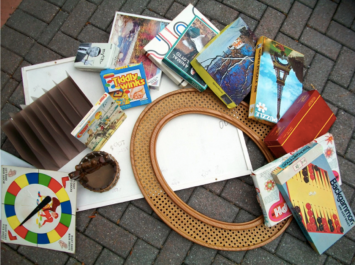
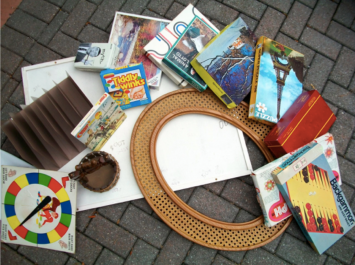
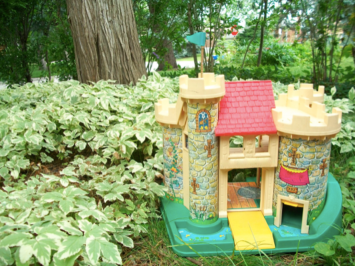
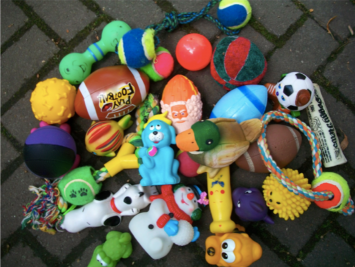
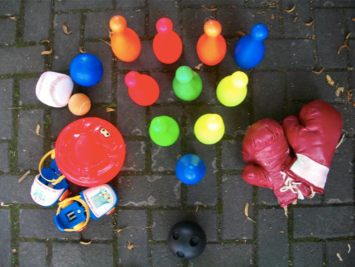
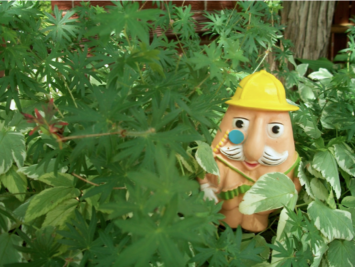
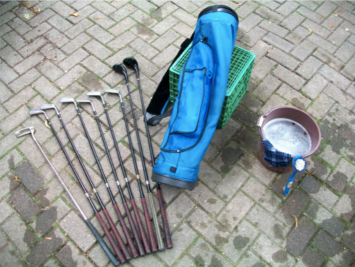
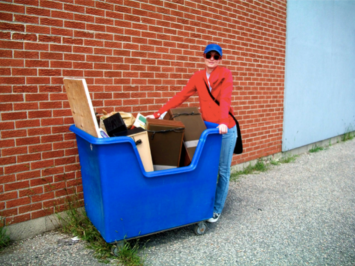



 Melissa Fockler has a Bachelor of Education, Master of Education and PhD in Education from York University. She also has a graduate diploma in Sustainability/Environmental Education from YorkU. As an education consultant, she helps educators and organizations incorporate sustainability into their courses and programs. Melissa Fockler can be contacted at: melissa.fockler (at) gmail.com
Melissa Fockler has a Bachelor of Education, Master of Education and PhD in Education from York University. She also has a graduate diploma in Sustainability/Environmental Education from YorkU. As an education consultant, she helps educators and organizations incorporate sustainability into their courses and programs. Melissa Fockler can be contacted at: melissa.fockler (at) gmail.com 
